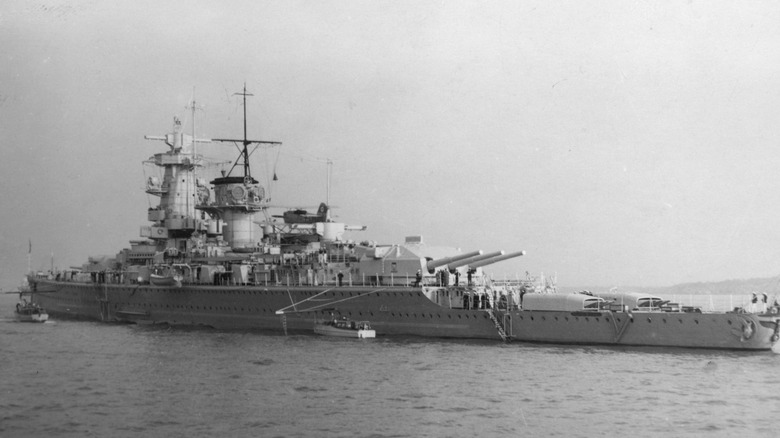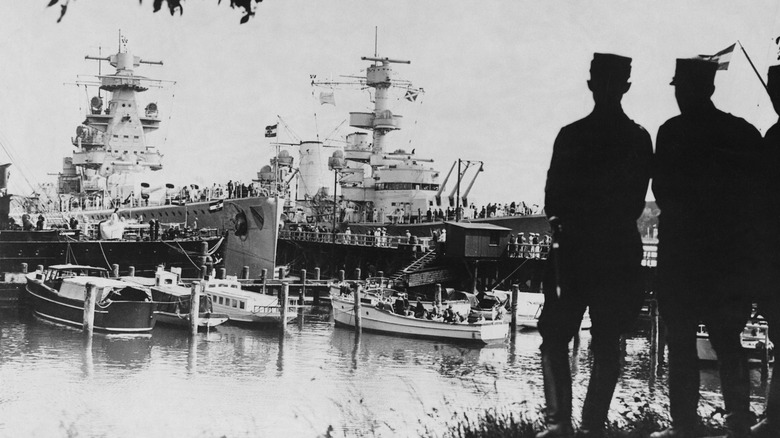What Is A Pocket Battleship And How Did Germany Use Them To Circumvent Naval Treaties?
"Pocket battleship" was the nickname given by the British to a very unique German weapon of war: the Panzerschiffe, or armored ship. Created as part of the nation's efforts to bolster its military in a critical period, and going on to serve in World War II, just three of them were made. This is unsurprising given the military regulations that the nation had been forced to adopt after the Central Powers' loss in the First World War. In the wake of World War I, the Allied nations were eager for Germany to surrender a great deal of its existing military might and, equally, have a difficult time building it up again.
To accomplish this, the Treaty of Versailles dramatically cut the nation's military resources, and in the naval sector, cut its total personnel to 15,000 and its commissioned vessels to (via BYU), "6 battleships of the Deutschland or Lothringen type, 6 light cruisers, 12 destroyers, 12 torpedo boats, or an equal number of ships constructed to replace them." There was a further stipulation: Those torpedo boats, battleships, and other vessels the German navy was permitted to retain couldn't be any heavier than 200 tons in the case of the former, and 10,000 tons for the latter.
The challenge facing the soon-resurgent German military, then, was to find a way to pack a lot of power into a relatively small vessel, helping it to pose a threat at sea again. Thus the pocket battleships, a small fleet of vessels that weren't as large as battleships, but were armed like them, were born.
Pure pocket power
Despite the Peace Treaty of Versailles stating, "the construction or acquisition of any submarine, even for commercial purposes, shall be forbidden in Germany," significantly restricting the German navy, there was some creative engineering used to develop functional and threatening new vessels in the Deutschland class. Three of them were built: The Deutschland itself in 1931, the Admiral Scheer two years later, and the Admiral Graf Spee in June 1934.
These ships were the first of this size to have their hulls electrically welded and for diesel engines to power them. This cut down the weight of the ships to 10,000 tons, officially, the number the Treaty of Versailles forbade exceeding. The fact that the Admiral Scheer was 609 feet long and had such a displacement makes it clear that, while certainly not tiny, these ships were far from the largest warships in military history. What they did have, though, were inordinately powerful weapons for their size, and considerable speed to boot.
They could hit 26 knots and their arsenals included a sextet of 11-inch Krupp guns. Unlike some rather experimental and creative military vessels, they actually saw combat during World War II. Despite none surviving the war, it's a testament to this trio of Panzerschiffes that experts, such as Captain Henry Harwood, would specifically give talks on countering and defeating pocket battleships at the British Royal Naval College.

